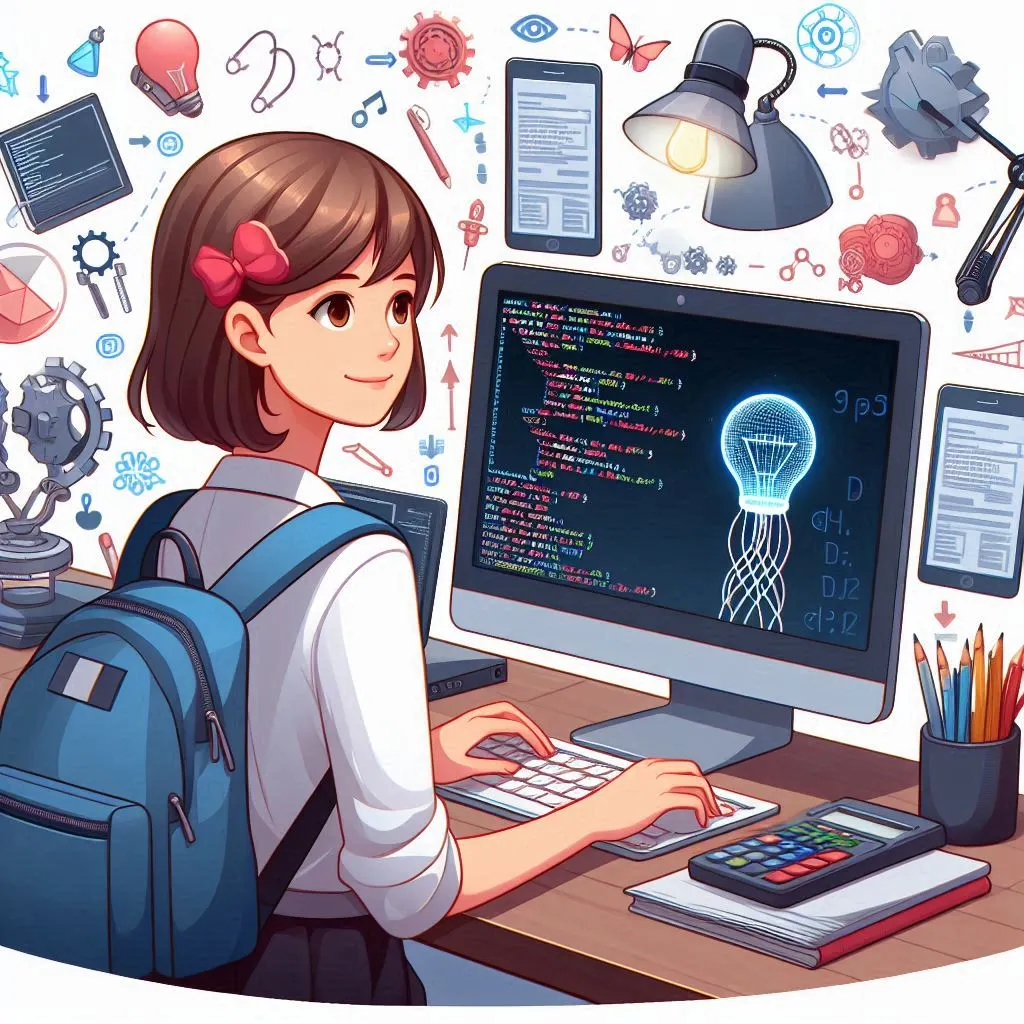Claim Your Offer
New semester, new challenges—but don’t stress, we’ve got your back! Get expert programming assignment help and breeze through Python, Java, C++, and more with ease. For a limited time, enjoy 10% OFF on all programming assignments with the Spring Special Discount! Just use code SPRING10OFF at checkout! Why stress over deadlines when you can score high effortlessly? Grab this exclusive offer now and make this semester your best one yet!
We Accept
- 1. Animation Principles
- 2. Keyframing
- 3. Motion Capture
- 4. Particle Systems
- 5. Constraints
- 6. Optimization
- 7. Rigid Bodies
- 8. Control of Rigid-Body Dynamics
- 9. Automated Learning of Muscle Control
- 10. Natural and Expressive Motion
- 11. Approximating Physics
- 12. Flexible Bodies
- 13. Cloth Simulation
- 14. Interactive Synthetic Characters
- 15. Smoke and Fluid Dynamics
- 16. Motion Editing
- 17. Higher-Level Behaviors and Composable Controllers
- 18. Robot Controllers for Legged Locomotion
- Conclusion
Computer animation is a captivating domain where creativity intertwines with technical acumen, enabling the manifestation of virtual characters and environments. For students delving into programming projects within this realm, grasping the fundamental algorithms is imperative. This guide serves as a beacon, illuminating pivotal concepts and techniques essential for navigating the intricacies of computer animation. By unraveling these algorithms, students can fortify their understanding and proficiency, laying a robust groundwork for their assignments and projects. Through this comprehensive exploration, they gain insights into the intricate mechanics that underpin lifelike animations and immersive virtual worlds. help with Algorithm assignment can be crucial for students aiming to master these skills. Armed with this knowledge, students can embark on their programming assignmentswith confidence, poised to craft captivating and technically sound creations in the realm of computer animation."
1. Animation Principles

The core of any animation project lies in the principles of animation, which are the guiding principles developed by Disney animators and serve as the bedrock of creating believable and engaging animations. These principles provide a framework for animators to follow, ensuring that their animations are visually appealing and effectively communicate the desired message.
- Squash and Stretch: This principle involves giving objects flexibility to convey weight and volume, making animations more dynamic and lifelike. By stretching and squashing objects appropriately, animators can create a sense of realism and impact in their animations.
- Anticipation: Anticipation is crucial for making movements appear more realistic and engaging. By incorporating anticipation into animations, animators can prepare the audience for upcoming actions, making the movements feel more natural and believable.
- Staging: Staging involves directing the audience's attention to the most important elements of the scene, ensuring that the message or story is conveyed effectively. Effective staging helps to guide the viewer's eye and focus on key actions or emotions within the animation.
- Timing: Timing is essential for conveying the physical properties of objects and the intent of actions. By adjusting the speed of actions, animators can create a sense of weight, momentum, and emotion in their animations, enhancing the overall impact and effectiveness of the storytelling.
2. Keyframing
Keyframing serves as a cornerstone technique in animation, allowing animators to define critical points (keyframes) in an object's movement and letting the computer interpolate the frames in between. This method is invaluable for controlling complex animations and ensuring seamless transitions between different poses or states. In the realm of programming, keyframing often involves the use of linear or spline interpolation algorithms to calculate the intermediate frames with precision, enabling smooth and fluid motion in animations.
3. Motion Capture
Motion capture (mocap) technology revolutionizes animation by capturing the movement of real actors and translating it into digital characters. Widely employed in movies and video games, mocap ensures highly realistic animations by directly integrating real-world movement data. However, processing and applying mocap data to virtual models entail sophisticated algorithms, often leveraging inverse kinematics to adjust the model's posture and movements to match the captured data, thus enhancing the authenticity and believability of the animation.
4. Particle Systems
Particle systems play a vital role in creating various visual effects, such as fire, smoke, and explosions, by simulating the behavior of numerous small particles that collectively form the desired effect. These systems rely on physics-based models to simulate the movement and interaction of particles realistically. Algorithms for particle systems are designed to introduce randomness and variability, often employing stochastic methods to replicate the chaotic nature of natural phenomena accurately. Through meticulous algorithmic design, particle systems contribute to the creation of immersive and visually stunning animations, enriching the viewer's experience with dynamic and captivating effects.
5. Constraints
Constraints serve as rules that govern the motion of objects within an animation, ensuring that interactions appear realistic and adhere to physical limitations. For instance, constraints prevent a character's hand from passing through their body, maintaining believability in the animation. Implementing constraints involves solving systems of equations to uphold these restrictions, guaranteeing that the animations accurately reflect the physical interactions and constraints of the objects involved. By integrating constraints effectively, animators can enhance the realism and coherence of their animations, immersing viewers in captivating and believable experiences.
6. Optimization
Optimization techniques play a pivotal role in enhancing the performance of animation algorithms, particularly in managing complex scenes and achieving high-quality animations. Methods such as Lagrange multipliers and gradient descent are instrumental in fine-tuning parameters and optimizing algorithms to efficiently produce desired effects. By leveraging optimization techniques, animators can streamline computational processes, reduce rendering times, and achieve smoother and more seamless animations, ultimately elevating the overall quality and impact of their work.
7. Rigid Bodies
Rigid body dynamics form the basis for simulating the motion of solid objects that do not deform, crucial for animations involving objects that need to maintain their shape and respond realistically to external forces. Algorithms in this domain entail solving Newton's equations of motion and managing collisions and interactions between objects. By accurately modeling rigid body dynamics, animators can create animations that faithfully replicate real-world physics, imbuing their creations with a sense of authenticity and immersion that captivates audiences.
8. Control of Rigid-Body Dynamics
Effective control of rigid-body dynamics demands the design of algorithms capable of guiding objects' motion in a physically plausible manner. Techniques such as forward and inverse dynamics enable the computation of forces and motions, providing animators with precise control over the behavior of animated objects. By implementing these techniques, animators can ensure that their animations adhere to realistic physical principles, resulting in animations that are both visually compelling and scientifically accurate.
9. Automated Learning of Muscle Control
Automating muscle control in character animation represents a cutting-edge application of machine learning algorithms. By leveraging these algorithms, animators can simulate realistic muscle movements, particularly beneficial for creating lifelike humanoid animations. Machine learning algorithms analyze real-world data to understand the complexities of muscle interactions, enabling animators to apply this knowledge to digital models. This approach enhances the authenticity and fluidity of character animations, captivating audiences with remarkably lifelike performances.
10. Natural and Expressive Motion
Capturing natural and expressive motion in characters necessitates the use of sophisticated algorithms capable of emulating the subtleties of human movement and emotion. Techniques such as motion blending, which seamlessly combines multiple animations, and procedural animation, which generates actions in real-time based on predefined rules, play a pivotal role in achieving this goal. By employing these techniques, animators can infuse their characters with depth and personality, crafting animations that resonate with audiences on an emotional level and bring their virtual creations to life in captivating ways.
11. Approximating Physics
In scenarios where full physical simulations prove computationally burdensome, approximating physics becomes imperative. This technique involves employing simplified models and heuristics to strike a balance between realism and computational efficiency. Widely utilized in real-time applications like video games, approximating physics enables developers to create immersive environments and dynamic interactions without sacrificing performance.
12. Flexible Bodies
Animating flexible bodies, such as rubbery objects or characters, presents unique challenges that require specialized algorithms. Techniques like finite element methods (FEM) and mass-spring systems are commonly employed to simulate the elastic properties of these bodies accurately. By leveraging these algorithms, animators can ensure that flexible objects bend, stretch, and deform in a realistic manner, enhancing the visual fidelity and immersion of their animations.
13. Cloth Simulation
Cloth simulation represents a specialized area within computer animation, focusing on the realistic movement of fabrics. Algorithms for cloth simulation often integrate particle systems and constraints to model the intricate behavior of cloth, accounting for properties like stretch, bend, and collision with other objects. By meticulously simulating these characteristics, animators can create lifelike clothing animations that enhance the realism and authenticity of their digital worlds.
14. Interactive Synthetic Characters
Interactive synthetic characters play a crucial role in immersive experiences, particularly in video games and virtual reality environments. These characters are designed to engage with users in real-time, requiring sophisticated algorithms for decision-making processes, AI-driven behaviors, and real-time response systems. By leveraging these algorithms, developers can create interactive experiences that captivate users and foster meaningful engagement, enhancing the overall immersion and enjoyment of the virtual world.
15. Smoke and Fluid Dynamics
Simulating smoke and fluids involves tackling complex fluid dynamics equations to accurately model their behavior. Algorithms such as the Navier-Stokes equations are utilized to simulate the flow and interaction of fluids, providing realistic animations for effects like smoke, water, and other fluid-like substances. By employing these advanced algorithms, animators can create stunning visual effects that add depth and realism to their animations, elevating the overall quality and immersion of the virtual environment.
16. Motion Editing
Motion editing techniques empower animators to tailor existing animations to meet specific requirements and creative visions. This versatile process encompasses tasks such as retargeting motions to different characters, blending multiple animations seamlessly, and refining movement by editing keyframes. Algorithms for motion editing ensure that modifications maintain the original animation's integrity and realism, allowing animators to achieve precise control over the motion and behavior of their characters. Through effective motion editing, animators can enhance the storytelling and visual appeal of their animations, delivering compelling and immersive experiences to their audience.
17. Higher-Level Behaviors and Composable Controllers
Designing algorithms for higher-level behaviors entails creating systems capable of handling intricate interactions and sequences of actions within animations. Composable controllers enable a modular approach to animation design, facilitating the combination and reuse of different behaviors to craft sophisticated animations. This method offers flexibility and efficiency, allowing animators to create characters with diverse and complex behavior patterns while streamlining the animation process.
18. Robot Controllers for Legged Locomotion
Animating robots, especially those with legs, requires simulating the intricate mechanics of locomotion, including walking, running, and other movements. Algorithms for legged locomotion govern the timing and movement of the legs to maintain balance and achieve realistic motion. By meticulously controlling these aspects, animators can create animations that accurately replicate the dynamics of robotic movement, enhancing the authenticity and immersion of the virtual world. This specialized area of animation presents unique challenges and opportunities for innovation, pushing the boundaries of animation technology.
Conclusion
In conclusion, mastering the core concepts and techniques of computer animation algorithms is essential for tackling diverse programming projects. Whether you're delving into crafting realistic character animations, conjuring up captivating special effects, or constructing interactive environments, a solid grasp of these algorithms will elevate the quality and realism of your work. By honing your skills in algorithmic understanding, you empower yourself to breathe life into virtual creations with finesse and precision. So, embrace the journey of animation with confidence and enthusiasm, knowing that your newfound knowledge will fuel your creativity and propel your projects to new heights. Happy animating!









